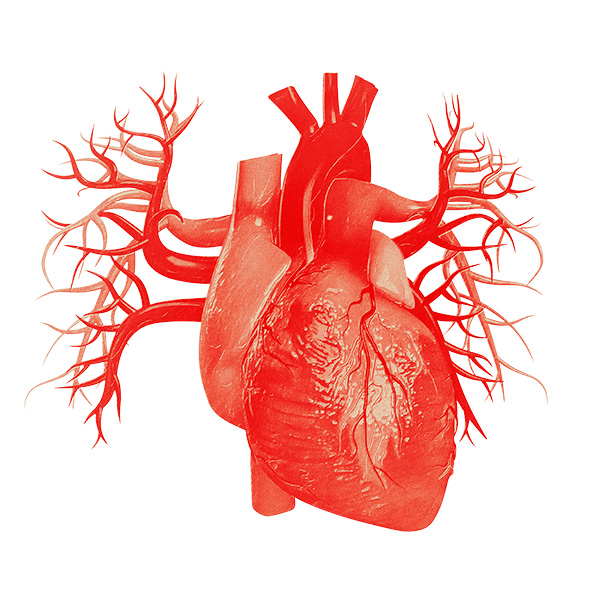
Empagliflozin
Understanding the connections between different diseases can provide the key to using the same drug to treat a variety of disorders
Read more
There are more than 450 million people worldwide living with mental health conditions like depression or schizophrenia. Research into the central nervous system (CNS) seems largely stagnant compared to the constant advances in other medical fields. Boehringer Ingelheim is committed to changing that. Precision psychiatry has the potential to reform clinical practice from the ground up and provide effective treatment for millions of people.
The CNS research teams at Boehringer Ingelheim have set themselves some ambitious objectives. To better understand these objectives, it’s worth considering the maxim that the better our understanding of a disease and what causes it, the more effective and targeted our treatment will be. Or to put it in simpler terms: knowledge comes before treatment.
This has been the fundamental principle driving progress in nearly every medical field in recent decades; as researchers learned more and more about the biological mechanisms underpinning a disease, new and increasingly precise treatments would be developed a short while later. This principle also led to the scientific community differentiating between the various forms of a disease, each of which has a specific and effective treatment.
There is one field of medicine which has seen very little progress over the years, however. “When it comes to psychiatry, we still tend to diagnose people based purely on their symptoms rather than the biological cause of the symptoms. This antiquated approach makes it very difficult to develop new therapeutics to provide people with more effective and focused treatments,” said Dr. Hugh Marston, Head of CNS Diseases Research at Boehringer Ingelheim. “It’s something we want to change.” The “we” in that sentence mainly refers to three teams at Boehringer Ingelheim that work together closely: Marston and his Discovery Research team; Dr. Vikas Sharma, Head of Medicine CNS, Retinopathies & Emerging Areas (TA CREA); and Dr. Joachim Scholpp, Head of Translational Medicine & Clinical Pharmacology CNS, Retinal Health & Emerging Areas (TA CREA).
These teams play their part in the drug development pipeline by performing basic research into the biological causes of psychiatric disorders. “Our brains contain a tremendous number of functional neural circuits. Disruption to specific circuits can result in specific symptoms. The journey of finding an effective substance begins with understanding which circuits are defective and how we can recognize that in an individual,” said Scholpp. The goal is to usher in a new era of precision psychiatry, which draws its meaning from the term precision medicine.
Researchers at Boehringer Ingelheim have already discovered nine new drugs for psychiatric indications based on this approach, some of which now have the preclinical development phase in their rear view mirror. One example is the GlyT-1 inhibitor BI425809, which appears to improve cognition in adults with schizophrenia. It entered Phase III trials in summer 2021.
Another good example of this groundbreaking work is the inhibitor BI 1358894, currently in Phase II. BI1358894 focuses on parts of the brain which regulate our emotions. “If I’m walking around in the city and hear a loud bang on my left, I would instinctively run in the opposite direction,” explained Marston. “Your brain diverts energy from everything else, like your ability to socialize and your digestive system – it is laser-focused on getting you out of danger.”
People do react differently, though. If your baseline activity is too high or too low, you will reach a trigger point much more quickly than you should. As a result, patients may respond inappropriately to the everyday challenges of life. Magnetic resonance imaging (MRI) can be used to determine whether the neural circuitry is functioning properly. “This disruption causes changes to how a patient processes emotions.
Our inhibitor has the potential to get the emotional system back in balance,” explained Marston. Borderline personality disorder, depression, and post-traumatic stress disorder can involve emotional dysregulation. “That’s why we clinically test BI 1358894 for all three indications,” explained Scholpp.
At present, we still distinguish between psychiatric disorders based on the symptoms that can be observed, rather than the underlying dysfunction of a patient’s neural circuits. Experts of Boehringer Ingelheim are discussing the issue with decision makers across the healthcare system – from the medical professionals who have a significant say on treatment guidelines to health insurance providers and regulatory authorities. “Our transdiagnostic approach has the potential to develop medicines that are truly innovative and improve the lives of patients suffering from psychiatric diseases,” said Scholpp.
Marston and his colleagues are also working on another challenge: looking for the biomarkers which would make it easy and cost-effective to detect disruption in neural circuits. “It’s really easy to tell if a patient’s brain is functioning as expected from an MRI. But it’s just not possible to include an MRI for every patient in a clinical routine. That would be incredibly expensive,” said Marston. That’s why the team is looking for other markers and methods which would make it easier to identify dysfunction in the neural circuits. These could include analyzing the concentration of specific substances in the blood or asking patients to fill out a questionnaire about their impulses, or possibly in the future a digital app.
Digital innovation has the potential to offer new health solutions to patients and the healthcare system. Digital Health is growing rapidly, and acceptance by patients, physicians, and health insurance companies is rising fast. In fact, recent surveys have shown that 84 percent of people with mental illnesses who own a smartphone are willing to download an app that helps them with their condition.
Schizophrenia is a complex and multi-faceted condition. Various pharmacological medications for treating the psychotic symptoms, such as hallucinations, delusions, and confusion, are available to people diagnosed with schizophrenia. However, people with schizophrenia can still remain functionally impaired due to insufficient treatment of other core symptoms of the disease, such as cognitive symptoms, anhedonia, or loss of interest and motivation.
Boehringer Ingelheim is collaborating on CT-155, which will address key unmet needs in the treatment of schizophrenia. As an adjunct to pharmacotherapy, CT-155 is intended to offer patients an engaging and accessible psychotherapeutic intervention. This digital therapeutic (DTx) which will prove its therapeutic efficacy in clinical trials and be approved by the health authorities is guided by the underlying science of Cognitive Behavior Therapy and combines multiple therapeutic interventions to help patients modify their behavior and train new skills.
Click on the black icons to explore the features of CT-155.
Calls to action promoting daily engagement with CT-155 help patients make tangible progress. CT-155 meets the patients where they are along their journey and promotes positive thinking.
CT-155 focuses on learning, building, and applying skills to situations the person faces in their daily life, such as managing difficult emotions.
Multiple neurobehavioral techniques work together to help people set goals that promote real-world engagement, arranging to meet a friend, for example.
Visual cues show the progress that has been made and ensure that the next goal is always within reach.

The focus of Boehringer Ingelheim on understanding the biological mechanisms that cause mental health disorders is visionary, says Dr. Hugh Marston. This approach is one of the reasons why Marston joined the company in 2020.
Hugh, you have been involved with psychiatric research since 1987 and joined Boehringer Ingelheim in 2020. What caused you to choose this company specifically?
Well, it didn’t hurt that Boehringer Ingelheim seemed enthusiastic about me joining the company (laughs). Another thing that attracted me was the fact that with the commitment of Boehringer Ingelheim to the area I would have the freedom and resources to do basic research and start to change the mindset in psychiatry. The company had already made a brave decision to stay in psychiatric research and made a significant investment by bringing in a pool of experts. We now have around 50 employees involved in fundamental CNS research and early drug discovery. There aren’t many other pharmaceutical companies with a CNS research team of that size and expertise.
Why do you think that is?
Psychiatry hasn’t really changed in decades. The biological causes of a large number of mental health disorders are still a mystery. Diagnosing patients based solely on their symptoms and selecting a treatment is still more art than science. Take depression, for example: you might feel temporarily depressed if you experienced the death of someone close to you. But that’s not the same as having clinical depression, though it may well be the starting point. Determining the transition from a normal to an abnormal emotional response is difficult.
Does that mean that we need to improve the way in which we diagnose disorders before we can develop better treatments?
Yes, and this requires patience and tenacity. Academic researchers are doing important work, but they need more support. Boehringer Ingelheim is fully prepared to get involved. We work together with a lot of partners – like King’s College London, where we’re probing the brain circuits involved in depression and cognition. We feel like we’re on the brink of something really special.
You already have a few substances in development.
Yes, I inherited a fascinating pipeline from my predecessor. It’s, for instance, incredibly exciting to have a program moving into Phase III development for cognition in schizophrenia that has the potential to break the mold in that area of psychiatry. We are improving our understanding of mental illnesses by approaching them from a completely new direction, increasingly focusing on the brain circuits that are malfunctioning.
What is your vision?
I believe that my grandchildrens’ generation will live in a world where it will be relatively simple to identify which part of your brain circuitry isn’t working quite right, before this majorly disrupts your life. This information will then allow the doctor to select the optimal treatment, quite possibly a combination of drug and digital approaches.

Yammie was diagnosed with schizoaffective disorder when she was 24 — after a year-long journey. Today, she is living a self-determined life. Based on her biography, she knows there is reason for hope, but it all depends on coming up with a correct and timely diagnosis.
Yammie experienced her first symptoms when she was a small child. “I saw beautiful colors and heard a voice speaking to me,” she recalls. When she was a teenager, Yammie started to feel depressed and frightened. She heard three voices, the psychosis completely took over. “I was driven to despair and had even tried to commit suicide.” She saw psychologists who came up with many different diagnoses. She was already 24 years old, when she got diagnosed with schizoaffective disorder. “It has been a real journey.”
The doctor was not optimistic for Yammie. He expected her symptoms to get worse. He told her she would most likely not be able to go to college, but would probably spend the rest of her life in the hospital.
Yammie Reached out for All Kinds of Support
Nevertheless, the young woman refused to accept that. Instead, she started fighting. She took a course for patients, in which extensive knowledge about the disease and the background was imparted. There, Yammie met Jurgen, a patient dealing with depression. They became friends and helped each other battle their demons. “We didn’t have to pretend that everything was OK. We could be honest with each other and understood what the other was going through,” Yammie explains. Yammie continued her therapy with Jurgen’s help.
Yammie has now been living a self-determined life for more than four years. “It’s a hard fight from time to time to stay above water – but I have the feeling that I have managed this well, and I’m happy.” This would not have been possible without the correct diagnosis. “A diagnosis can be a curse for some people, but I know it can be a real relief for others. For me, it was a relief because I knew it had a name, and there was treatment for it.”